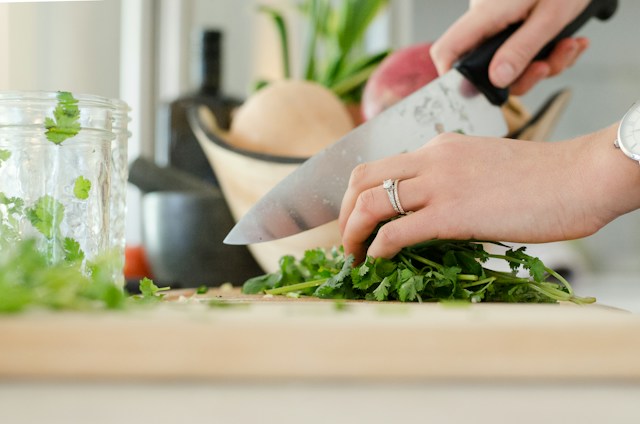
Crafting Delectable Delights on a Budget: A Guide to Budget-Friendly Bakery Creations
Introduction
In the ever-evolving world of bakery delights, mastering the art of creating budget-friendly dishes is not only a cost-effective approach but also a skill that showcases creativity and innovation. This article explores practical tips and strategies for producing mouthwatering bakery treats without compromising quality.
I. Sourcing Affordable Ingredients
When aiming for budget-friendly bakery dishes, the key lies in selecting cost-effective yet high-quality ingredients. Explore local markets, discount stores, and wholesale suppliers for bulk purchases of flour, sugar, and other essential components. This ensures a foundation of freshness without breaking the bank.
II. Efficient Equipment Utilization
Investing in quality equipment is crucial for any bakery, but it doesn’t mean breaking the budget. Look for second-hand or refurbished machinery to save costs without sacrificing performance. Regular maintenance is also essential to extend the lifespan of your equipment, ensuring the consistent quality of your baked goods.
III. Flavorful Innovations with Basic Ingredients
Creating the best bakery dishes can sometimes require exotic and expensive ingredients. Experiment with classic and readily available components, combining them in unique ways. For instance, infuse a citrus twist into a basic muffin recipe or enhance a simple cookie with a touch of natural extracts. The key is to elevate familiar flavors with innovative combinations.
IV. Minimizing Food Waste
Efficient management of ingredients is crucial for budget-conscious bakeries. Utilize a just-in-time inventory system to minimize waste and keep costs low. Consider repurposing surplus ingredients creatively – stale bread can transform into breadcrumbs or croutons, reducing overall expenses while maintaining sustainability.
V. Community Engagement and Collaboration
Building strong ties with local farmers, producers, and suppliers can lead to mutual benefits. Establishing direct relationships may result in bulk discounts or exclusive deals, contributing to cost savings. Engaging with the community also opens up opportunities for collaboration, such as cross-promotions with neighboring businesses or participating in local events.
VI. Streamlining Production Processes
Optimizing bakery operations is crucial for both efficiency and cost-effectiveness. Implementing streamlined production processes, such as batching and multitasking, reduces labor costs and increases productivity. Utilize technology to track inventory, manage orders, and streamline customer interactions, ensuring a smooth and cost-effective workflow.
Easy Apple Pie Recipe
Ingredients:
- 6 cups peeled, cored, and sliced apples (use a mix of sweet and tart varieties)
- 3/4 cup granulated sugar
- 1 teaspoon ground cinnamon
- 1/4 teaspoon ground nutmeg
- 2 tablespoons all-purpose flour
- 1 tablespoon lemon juice
- 1 package refrigerated pie crusts (or you can make your own)
- 1 tablespoon unsalted butter, cut into small pieces
- Optional: 1 egg (for egg wash)
- Optional: Additional sugar for sprinkling on top
Instructions:
- Preheat the Oven: Preheat your oven to 425°F (220°C).
- Prepare the Apples: In a large mixing bowl, combine the sliced apples, sugar, cinnamon, nutmeg, flour, and lemon juice. Toss the ingredients until the apples are evenly coated. Set aside.
- Roll Out the Pie Crust: If you’re using store-bought pie crusts, roll out one of the crusts and place it in a 9-inch pie dish. Trim any excess crust hanging over the edges.
- Fill the Pie: Pour the prepared apple mixture into the pie crust, spreading it out evenly. Dot the top of the apples with small pieces of butter.
- Top with Second Crust: Roll out the second pie crust and place it over the apples. You can either cover the entire pie with the crust or create a lattice pattern. Press the edges of the top and bottom crusts together to seal.
- Ventilation: If you’ve covered the entire pie, cut a few slits on the top crust to allow steam to escape during baking.
- Optional Egg Wash: For a golden finish, you can whisk an egg and brush it over the top crust. Sprinkle with sugar if desired.
- Bake: Place the pie on a baking sheet (to catch any drips) and bake in the preheated oven for 45-50 minutes or until the crust is golden brown and the filling is bubbly.
- Cool and Serve: Allow the pie to cool for a bit before slicing. Serve warm on its own or with a scoop of vanilla ice cream.
Conclusion
Crafting the best bakery dishes on a budget is a delicate balance between resourcefulness, innovation, and strategic planning. By sourcing affordable ingredients, optimizing equipment utilization, exploring flavor innovations, minimizing food waste, fostering community engagement, and streamlining production processes, bakeries can create delightful treats that captivate the taste buds while keeping costs in check. This approach benefits the bottom line and showcases the bakery industry’s resilience and creativity.

